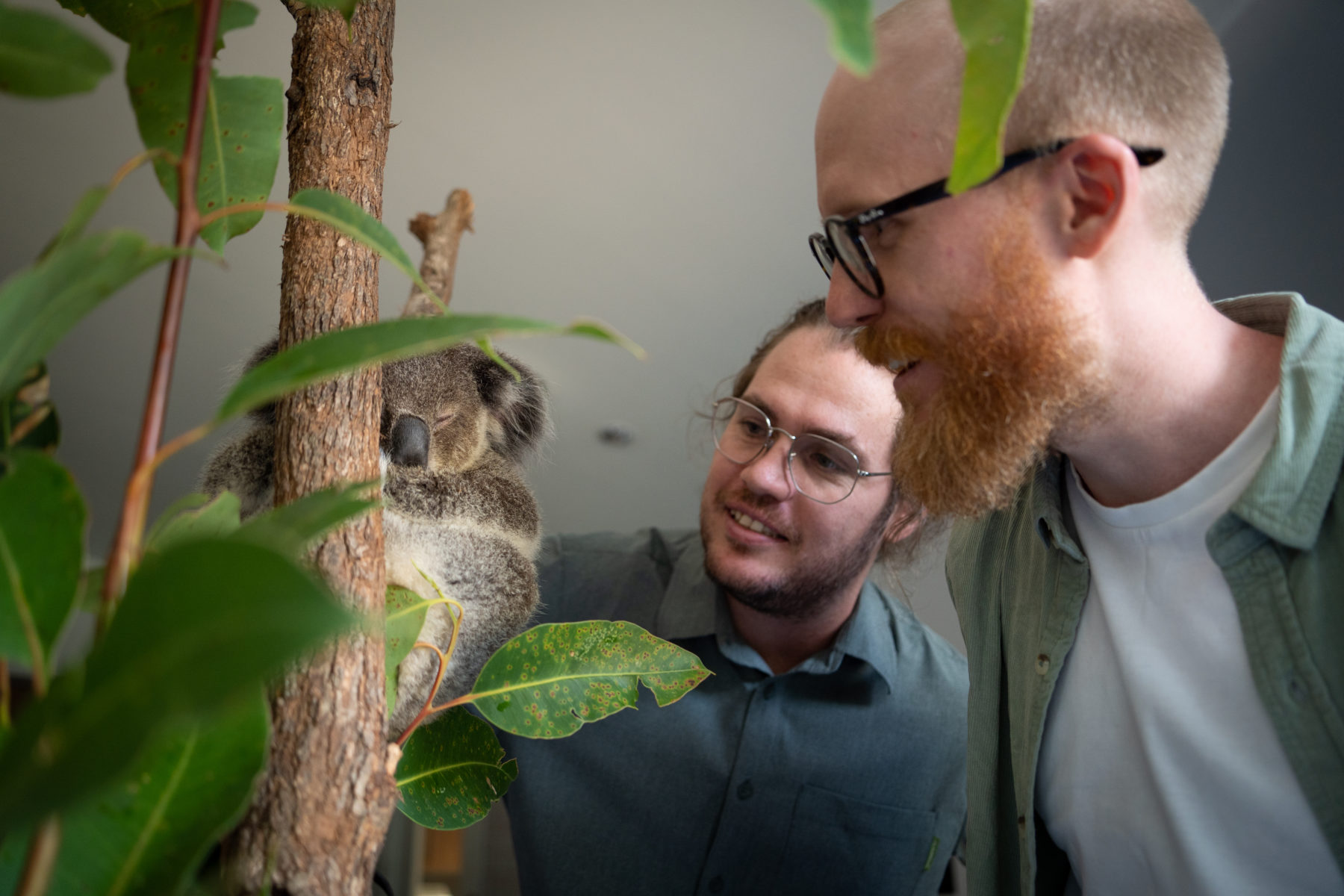Koala sperm banks could future-proof populations

Biobanking and tweaking existing assisted reproduction technology already used to help humans conceive are key tools needed to future-proof koala populations, according to a first-of-its-kind model developed by researchers at the University of Newcastle.
Authors of the model, published in international journal Animals, argue the development of these tools can help existing captive breeding programs to retain genetic diversity, avoiding the current problem of inbreeding.
“Our modelling shows that supplementing frozen founder sperm into koala colonies using various assisted reproductive technologies – such as those common in agriculture and human fertility – could significantly reduce inbreeding and allow captive programs to hold smaller colonies whilst still meeting optimal genetic diversity targets,” says lead author and Honorary Associate Lecturer at the University of Newcastle, Dr Lachlan Howell.
Using frozen sperm can also help wild populations, Dr Howell explains: “We can reintroduce genetic variation into wild koala populations without having to relocate koalas.”
Financial benefits
While existing captive koala breeding programs have been incredibly successful, they face limitations when it comes to not only genetic diversity, but high costs.
Co-author and Postdoctoral Researcher with the University of Newcastle’s School of Environmental and Life Sciences, Dr Ryan Witt, says their model shows a 5–12-fold reduction in overall program costs of current captive koala breeding programs.
“Captive breeding programs require larger koala colony sizes to prevent inbreeding. But by integrating assisted reproduction we can reduce the number of koalas needing to be in captivity, lower costs, and improve genetic diversity,” says Dr Witt.
“This would free up valuable conservation funding to support a greater number of species, or to support other koala conservation efforts such as habitat restoration.”

(Phascolarctos cinereus) at Port Stephens Koala Hospital, NSW. Image credit: University of Newcastle
‘We have to do something’
In February this year koala populations in Queensland, New South Wales and the Australian Capital Territory were officially classified as endangered.
Without intervention, koalas are predicted to become extinct in New South Wales by 2050.
“They are consistently in peril,” says Dr Witt.
“We’re at a point now where we have to do something to manage koalas going forward to ensure that we still have koalas here in 30 years … koalas need all the help they can get.”
Dr Howell agrees, adding “we don’t have an insurance policy against drastic declines in populations.
An example of a drastic decline in population came with the 2019–20 bushfires.
“What we saw was thousands of koalas being wiped out. Conventional captive breeding programs just can’t keep up with that drastic rate of loss – we don’t have an insurance policy that is cost effective and financially feasible in order to mitigate against that – so we want to develop tools that allow for the frozen storage of what is essentially insurance against these drastic losses,” says Dr Howell.
What next?
“We know that artificial insemination using fresh and chilled sperm works in koalas,” says Dr Howell. “The hurdle is trying to freeze sperm and make use of it.”
“All that is needed now is more research and funding to tweak existing assisted reproduction technologies so that we can cryopreserve koala sperm, just like we do for humans.”
What’s really needed is an injection of funding, says Dr Witt.
“We essentially have all the infrastructure that we need to start building this technology.
“The only thing we really need is an injection of funding to do the research to be able to get this technology going, and going in the right direction so that in 10 or 20 year’s time we have it and it can be integrated across a wider network.”





